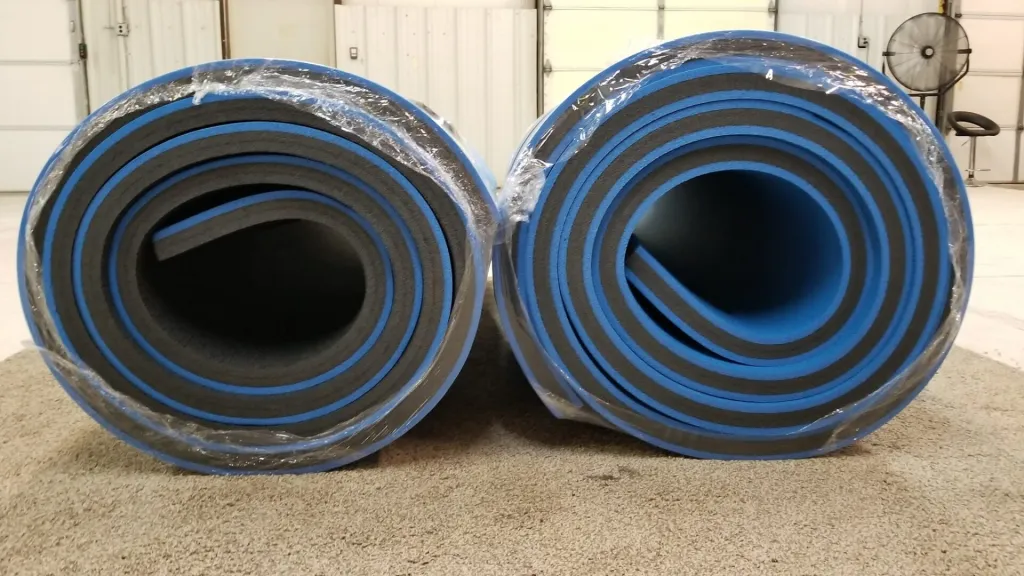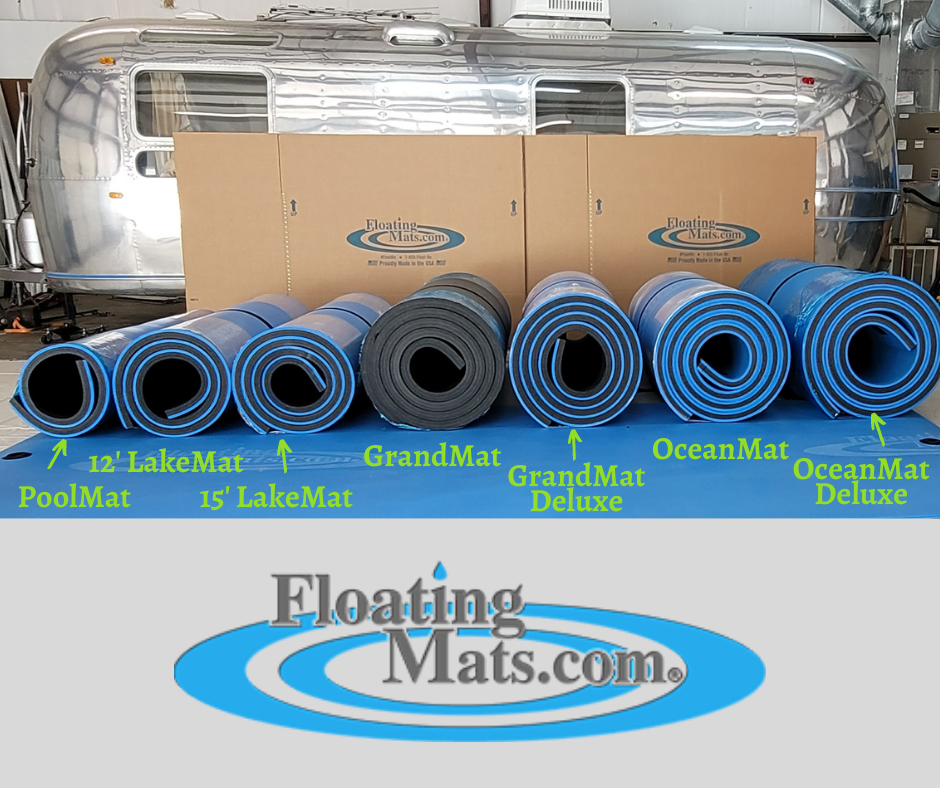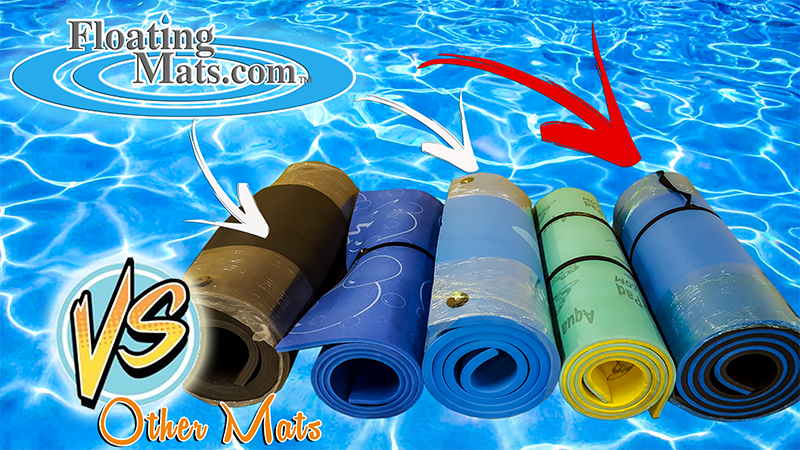These mats typically consist of several layers of foam held together by a durable outer layer and provide a stable and comfortable platform for users to rest or play on.
However, not all foam is created equal, and the quality of the foam used in a floating mat can have a big impact on its performance, safety, and lifespan.
Below, we’ll explore the importance of high-quality foam in a floating foam mat, and discuss the benefits of choosing a mat with superior foam materials.
Whether you’re a casual visitor of the lake or a seasoned water sports enthusiast, understanding the role of foam quality is essential to making an informed purchase decision.
Benefits of High-Quality Foam
High-quality foam is essential for a floating mat to provide the safety, comfort, and performance that users expect.
In general, the higher the quality of the foam used in yoru mat, the greater chance you benefit from:
- Longer lifespan of the mat
- Increased buoyancy and weight capacity
- Enhanced safety features and resistance to damage
- Improved comfort for users
The foam used in our mats is carefully selected for its superior buoyancy, stability, and durability, and is designed to provide years of reliable service while still being comfortable and supportive for users of all sizes.
Additionally, the foam is treated with a special water-resistant coating to ensure it won’t absorb water and become heavy or uncomfortable.
Types of Foam Used in Floating Foam Mats

When shopping for a floating foam mat, one of the most important factors to consider is the type of foam used.
The foam is what keeps you floating atop the water, so its quality and durability are critical.
Here’s an overview of the main types of foam used:
Closed-Cell Foam
Closed-cell foams like cross-linked polyethylene (XLPE) and ethylene vinyl acetate (EVA) are the gold standard for floating mats.
The closed-cell structure makes the foam waterproof and extremely buoyant. XLPE and EVA are also very durable, retain their shape well, and resist compression over time.
Pros: Excellent buoyancy, waterproof, durable, retains shape
Cons: More expensive, heavier than other foams
Open-Cell Foam
Open-cell foams such as polyurethane and latex are softer, more flexible, and cheaper than closed-cell options.
However, they absorb water, are less durable long-term, and are more prone to compression issues.
Pros: Lightweight, soft, flexible, inexpensive
Cons: Absorbs water, less durable, compresses over time
Expanded Polystyrene (EPS)
EPS foam is very lightweight and affordable. But it breaks down more quickly than other foams. It also absorbs water and does not hold up well over years of use.
Pros: Extremely lightweight, inexpensive
Cons: Not durable, absorbs water, breaks down over time
Key Takeaway
When prioritizing quality and durability in a floating mat, always look for closed-cell foams like XLPE or EVA.
The higher initial investment will pay off with years of superior buoyancy and enjoyment on the water.
Even though you will find them on the market, often at a significantly cheaper price point, avoid open-cell polyurethane or EPS foams if possible.

Factors to Consider When Choosing a Floating Foam Mat with High-Quality Foam
When selecting a floating foam mat, it’s important to consider several factors to ensure you get the best value and performance from your purchase. Here are some key aspects to keep in mind:
Size and Thickness
Choose a mat that accommodates the number of people who will be using it simultaneously.
Thicker mats generally offer better buoyancy and stability but may be heavier and more difficult to transport.
Weight Capacity
Ensure the mat has an adequate weight capacity for all users.
Higher-quality foam materials like XPE and EVA often provide better weight capacity.
Durability and Resistance to Damage
Look for mats made from high-quality foam, such as XPE or EVA, which offer better durability and resistance to punctures, UV rays, and water absorption.
Consider mats with additional protective features like reinforced edges or durable outer layers.
Comfort and Non-Slip Features
Choose a mat with a comfortable surface texture that is soft yet provides grip and traction to prevent slipping.
EVA foam is known for its softness and comfort, making it an excellent choice for floating mats.
Price and Value for Money
While high-quality foam materials may be more expensive, they generally offer better durability, longevity, and overall value for money.
Balance your budget with the other factors listed above to make an informed decision.
By considering these factors when choosing a floating foam mat, you can ensure that you select a product with high-quality foam that meets your specific needs and preferences.
A well-chosen mat will provide you with optimal performance, safety, and enjoyment during your water-based recreational activities.
Conclusion
At FloatingMats.com, we take great pride in providing our customers with the highest quality products.
Our floating foam mats are designed with superior foam materials and features to ensure optimal performance, safety, and comfort for users of all sizes
We believe that investing in a quality foam mat is an investment in your safety and enjoyment on the water.
Shop our selection today to find the perfect floating foam mat for your needs.


